
Half the seeds that produced this plant were given to a plant curious and most stubborn
man in Porto Alegre. This guy is always reinventing the wheel
and of course the germination was poor and the surviving of the seedlings a total and complete disaster.
Do not reinvent the wheel.
In order to germinate a Dyckia seed demands:
humidity - acidity - light - warm
The temperature should be above 16 degrees Centigrade
The ideal temperature may stays in between 21 and 26 degrees Centigrade.
...and the wheel? ...the wheel is round!

In Nature the substrate is constantly renewed piece by little piece.
Fallen leaves and old broken bush sticks, old grass killed by the winter cold, tiny animals corpses, lichens, fungi freed from the stone surface above the plant,
and what may the dew and rain water and the wind bring to the Dyckia´s feet.
This fertilizer feeds the fungi and this fungi feed the plant.
Dyckia are good forks! They are ever good at table.
Install a healthy Dyckia on a pot and forget the feeding is a nonsense.
Dyckias must be feed frequently.
This process or way to feed them is a practical and easy task but this is not the only way we have to feed a Dyckia. They must feed through the under leaves stomata.
Against all the odds this plant here is a young seedling and it is native to South.
One could swear it is a plant from the Cerrado but it is not. This plant gets sole red all over.
Comes from North Center Rio Grand do Sul. It is a small sized species
New, rare and nameless.


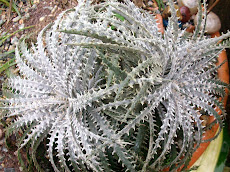



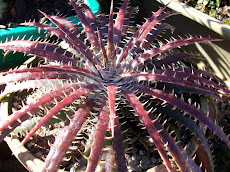
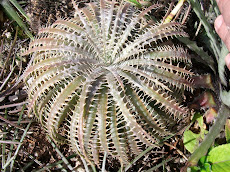
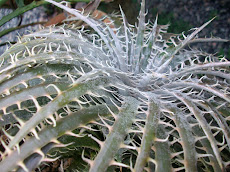

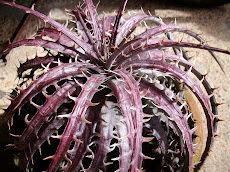

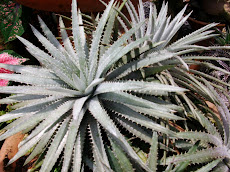

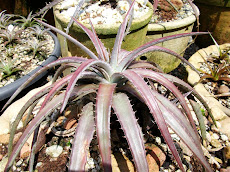
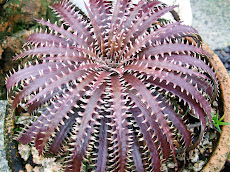

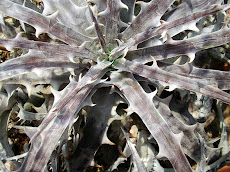
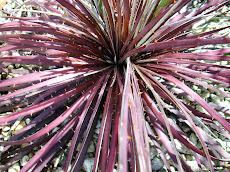
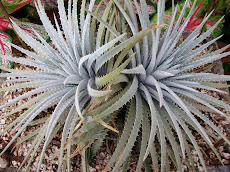
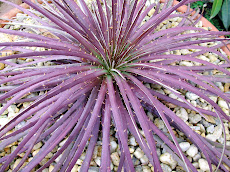
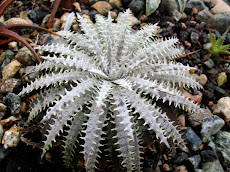
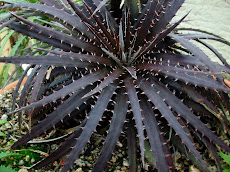
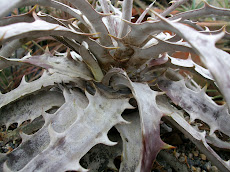
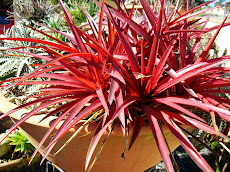
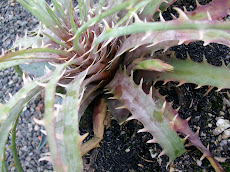

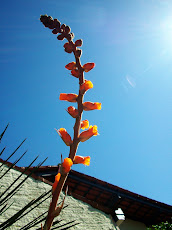
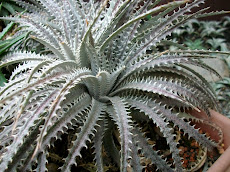

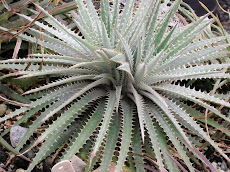
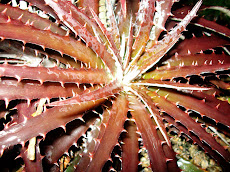
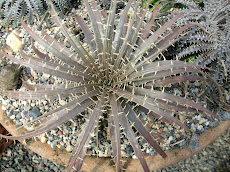


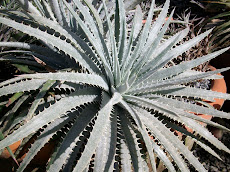

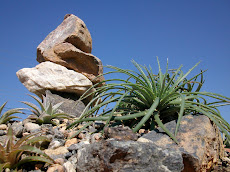
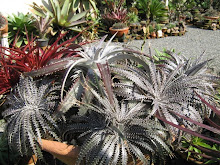
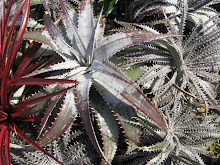
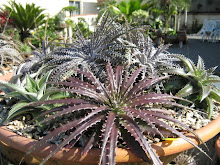
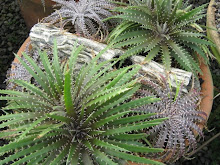
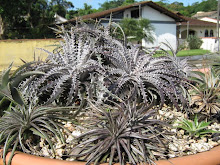
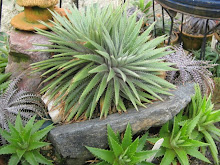

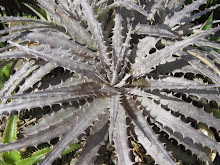
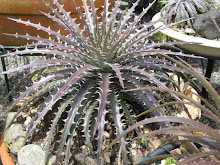
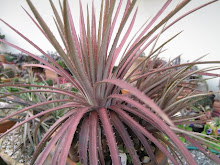

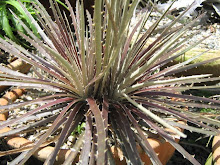
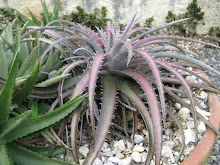
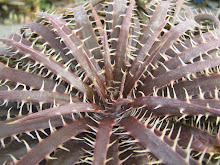



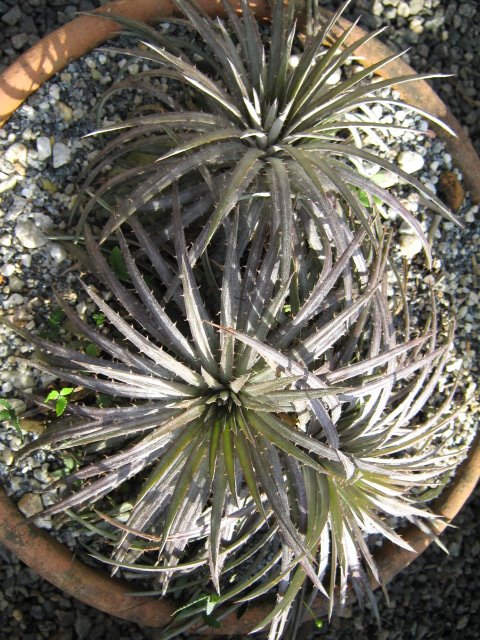
Thanks for the germination specific temps. How strong of a spray-on chemical fertilizer can they take? I would think the silver covering would concentrate the food and easily burn the plants.No?
ReplyDeleteGary, I tried a locally-made spray-on liquid fertilizer on a marnier using recommended concentration(might be on the strong side), no adverse affects; so far.
ReplyDeleteBancherd
PS. Which part of Oregon do you live? I used to live in Puyallup, WA for a few years.